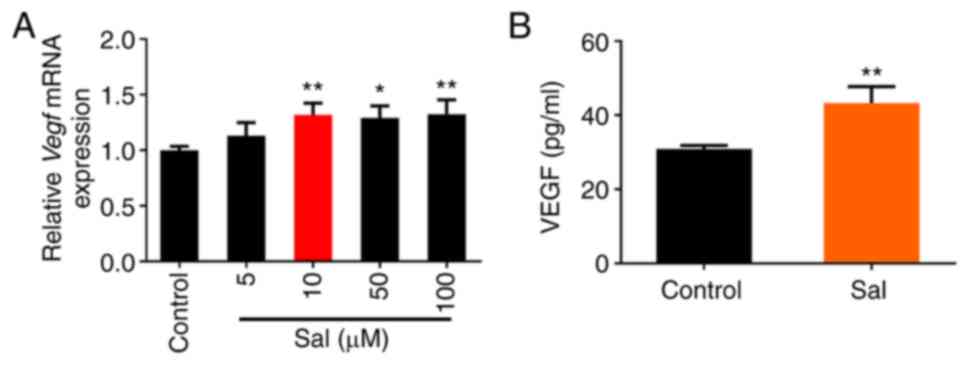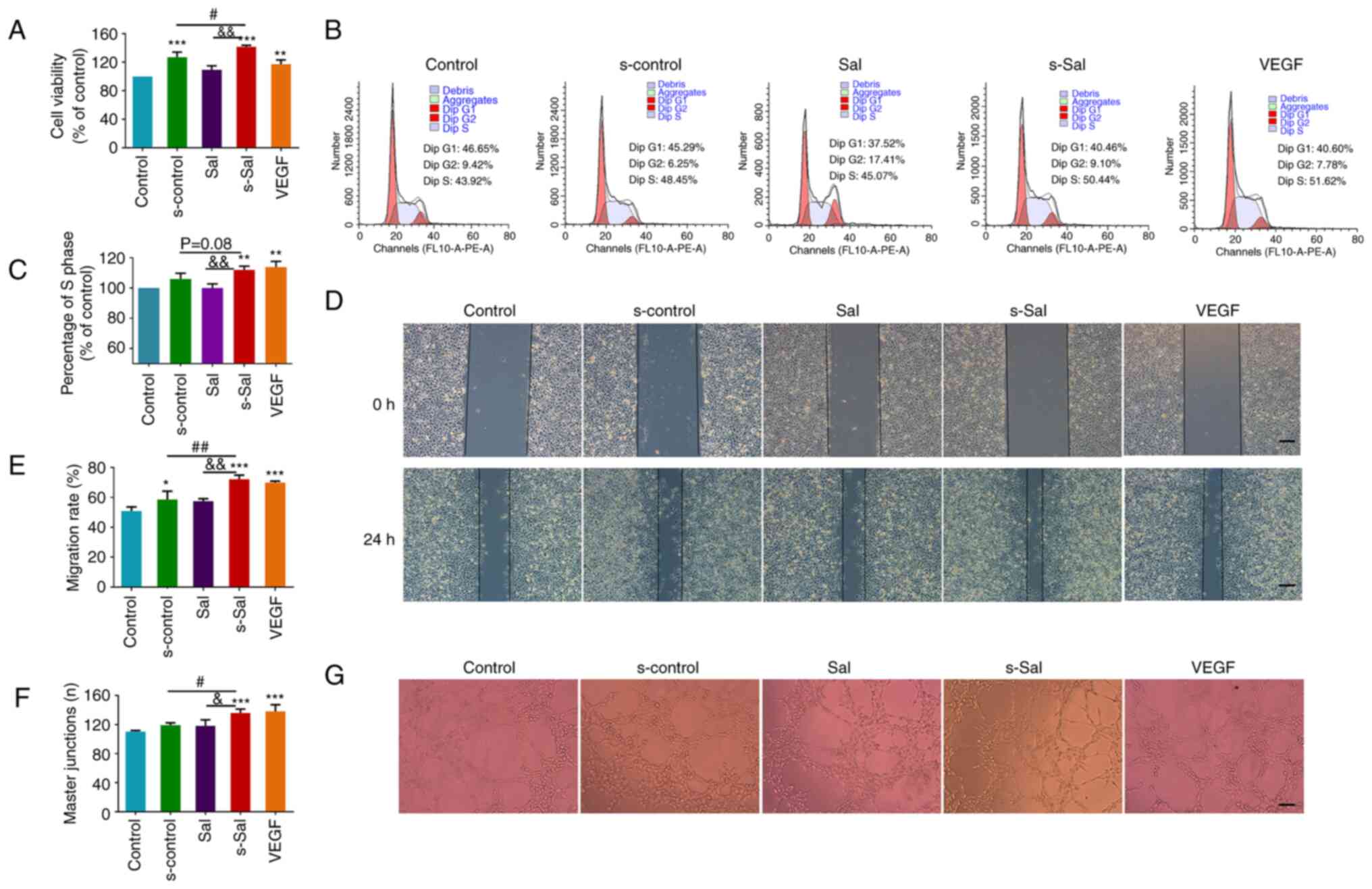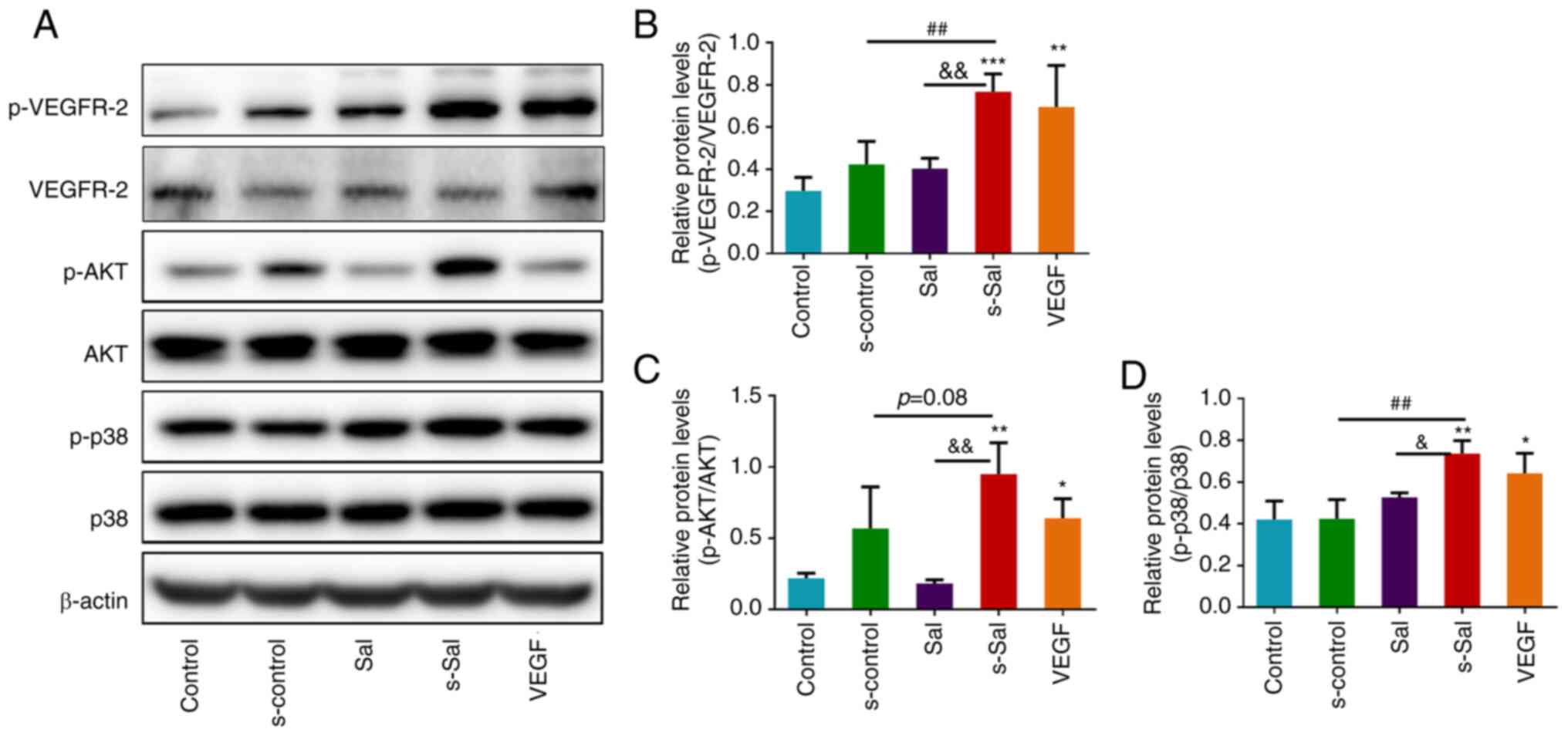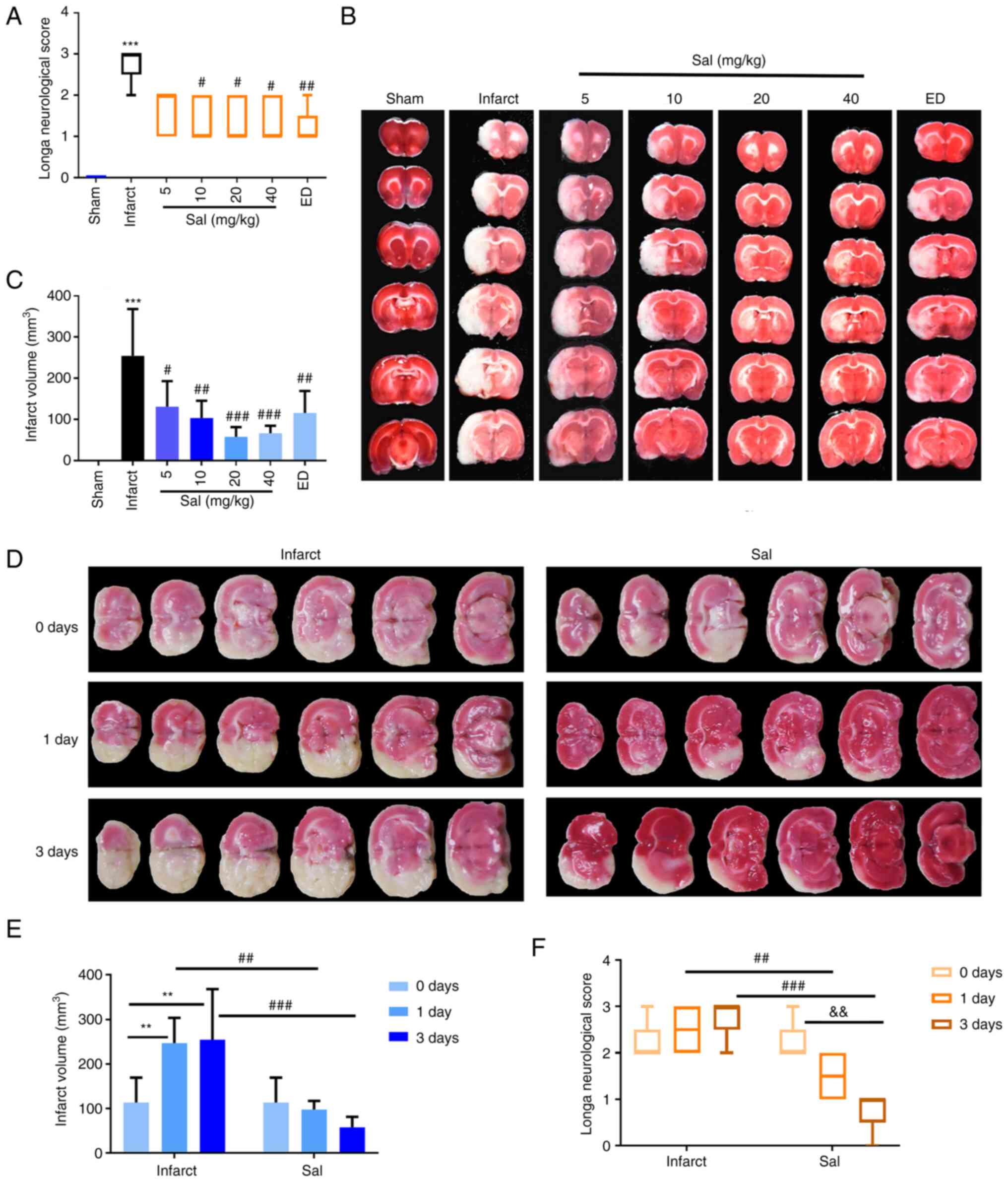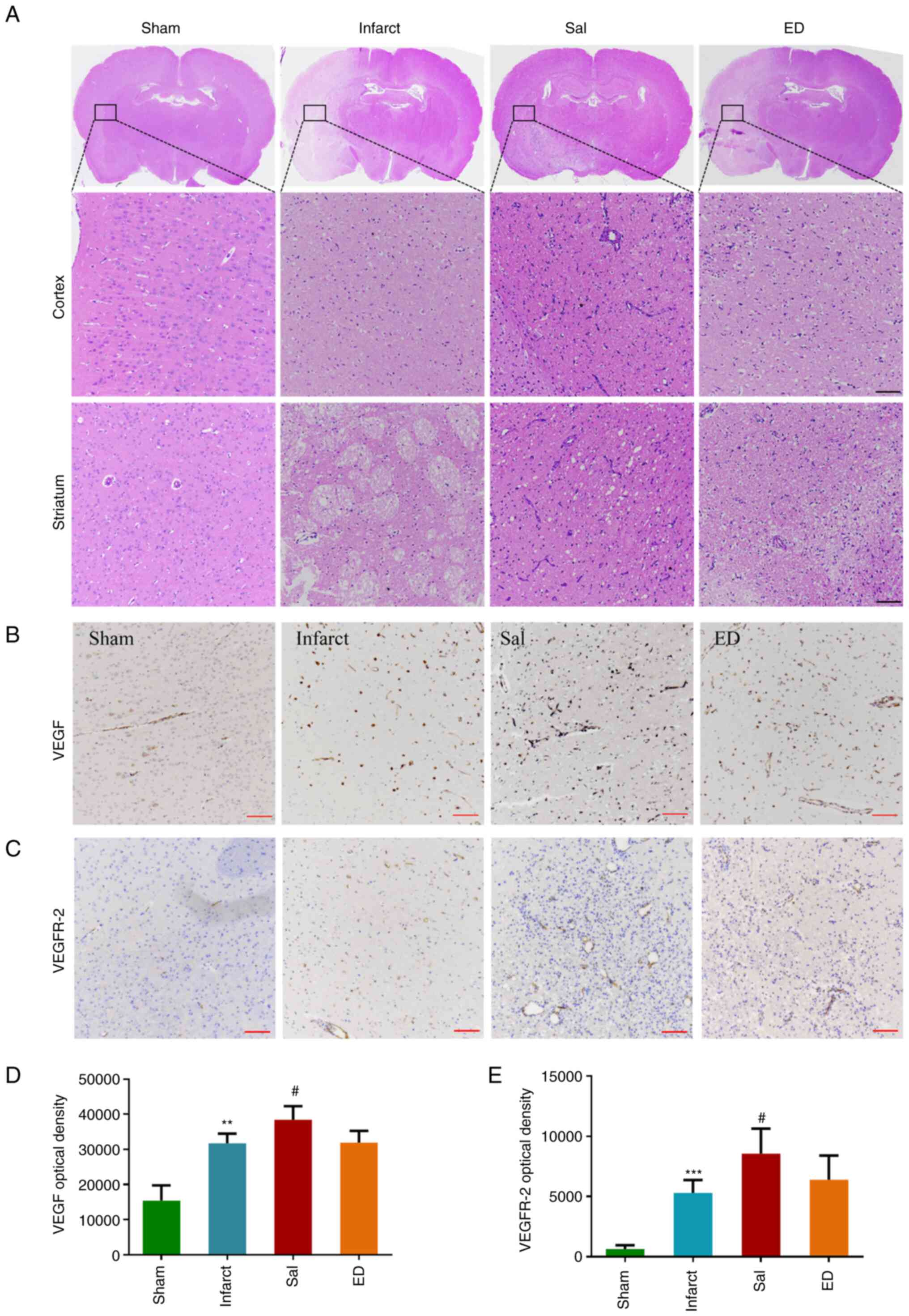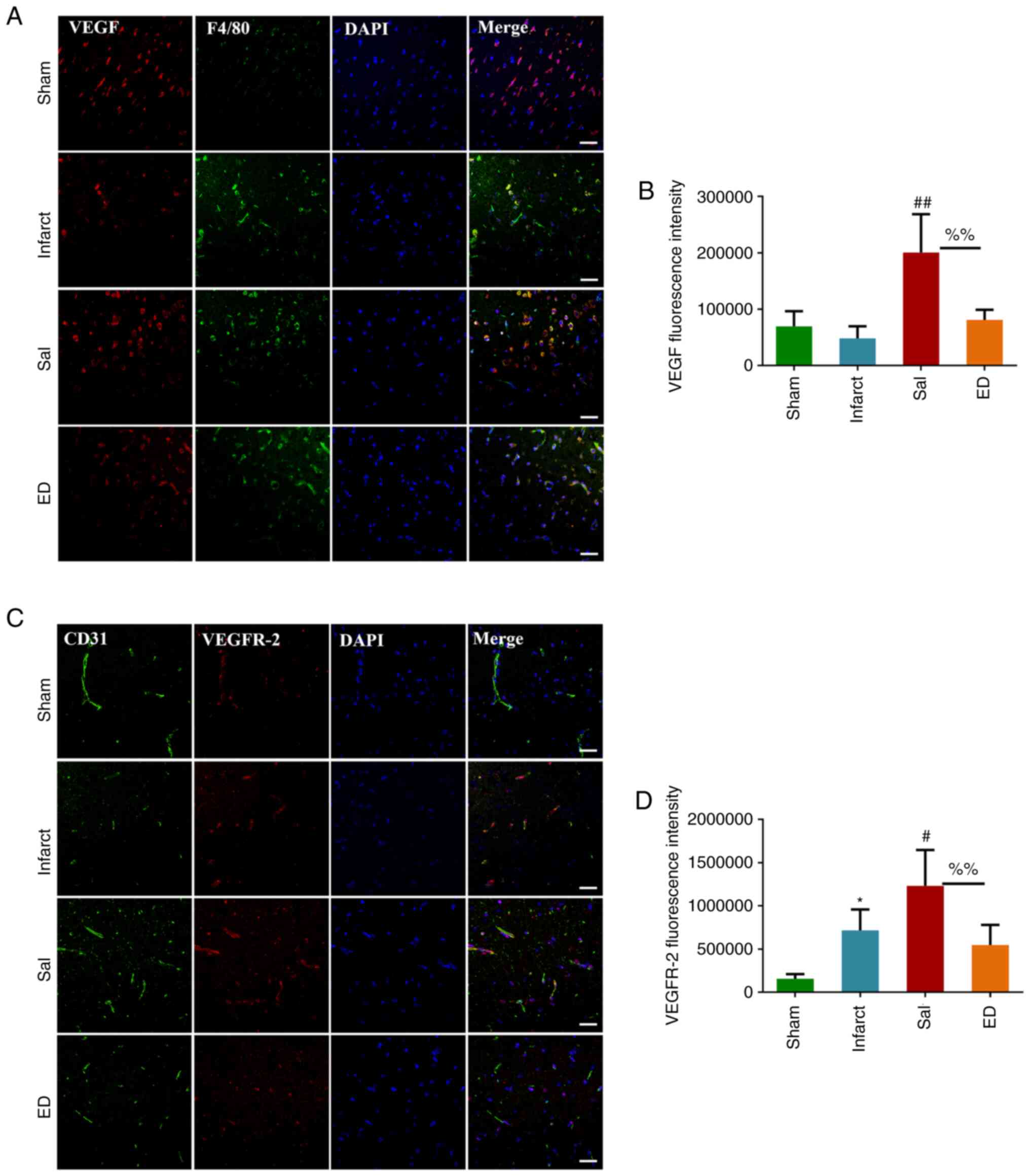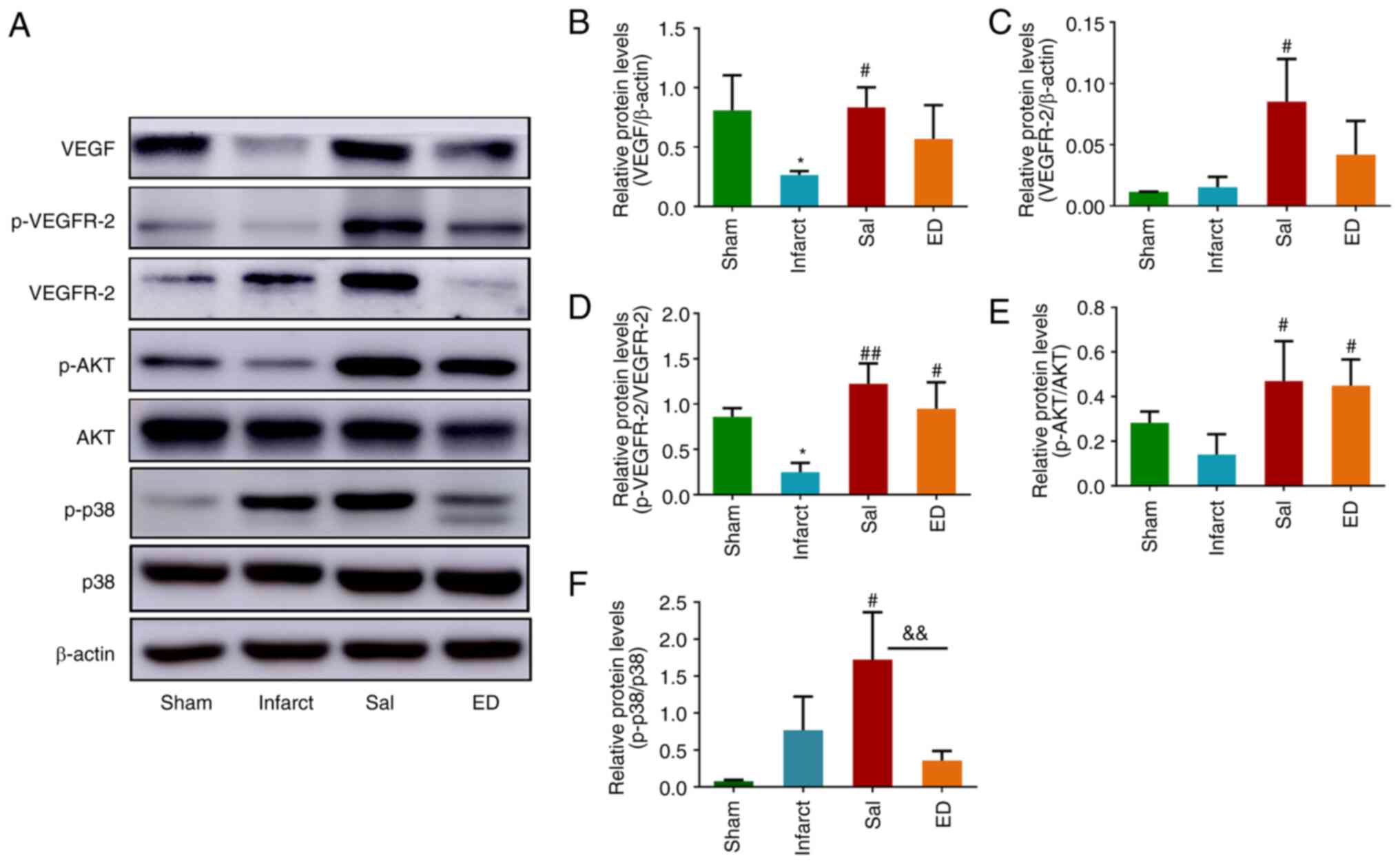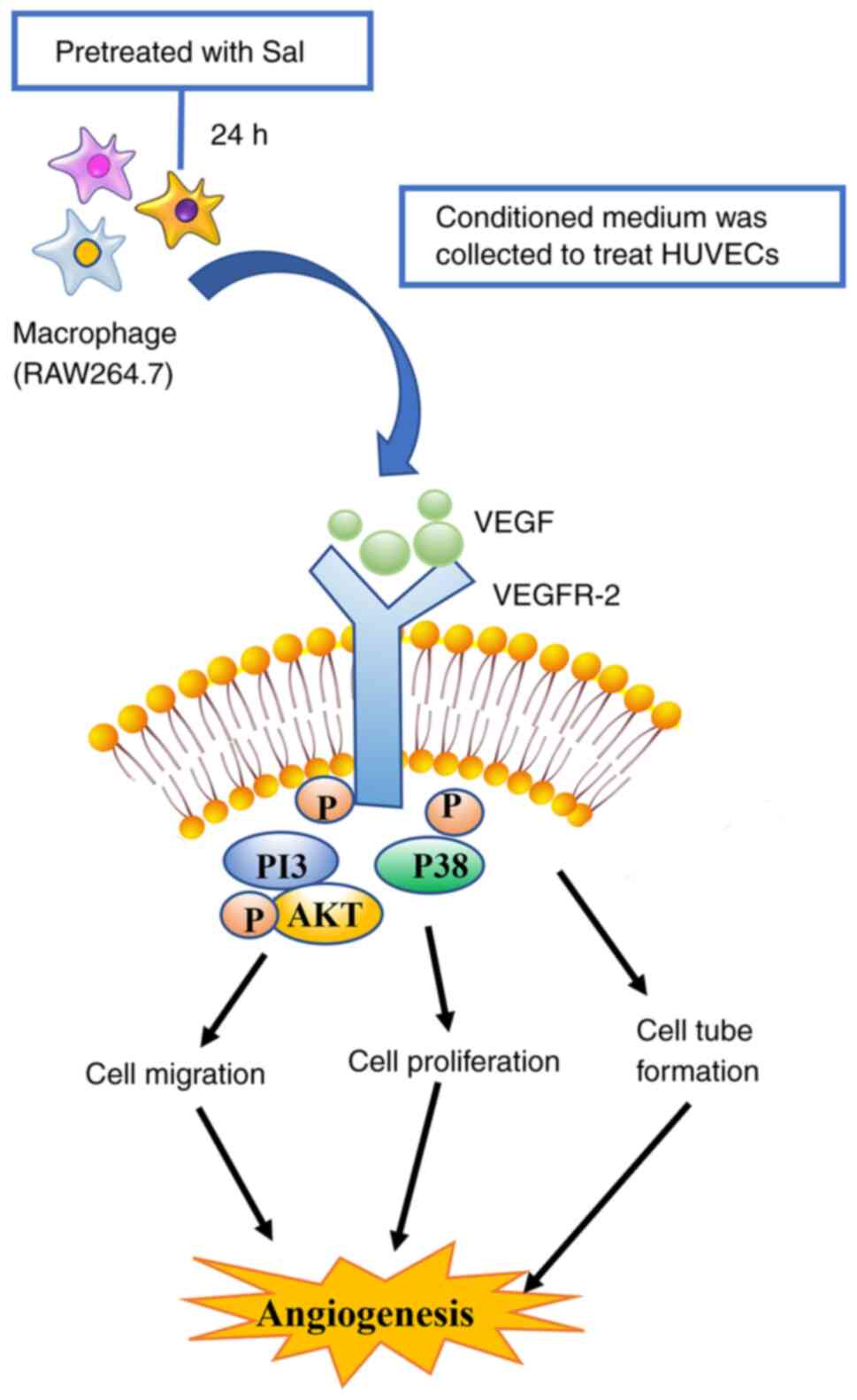|
1
|
Guo H, Adah D, James PB, Liu Q, Li G,
Ahmadu P, Chai L, Wang S, Liu Y and Hu L: Xueshuantong injection
(lyophilized) attenuates cerebral ischemia/reperfusion injury by
the activation of Nrf2-VEGF pathway. Neurochem Res. 43:1096–1103.
2018.PubMed/NCBI View Article : Google Scholar
|
|
2
|
Xu H, Cao Y, Yang X, Cai P, Kang L, Zhu X,
Luo H, Lu L, Wei L, Bai X, et al: ADAMTS13 controls vascular
remodeling by modifying VWF reactivity during stroke recovery.
Blood. 130:11–22. 2017.PubMed/NCBI View Article : Google Scholar
|
|
3
|
Yin KJ, Hamblin M and Chen YE:
Angiogenesis-regulating microRNAs and ischemic stroke. Curr Vasc
Pharmacol. 13:352–365. 2015.PubMed/NCBI View Article : Google Scholar
|
|
4
|
Deb P, Sharma S and Hassan KM:
Pathophysiologic mechanisms of acute ischemic stroke: An overview
with emphasis on therapeutic significance beyond thrombolysis.
Pathophysiology. 17:197–218. 2010.PubMed/NCBI View Article : Google Scholar
|
|
5
|
Feng D, Wang B, Wang L, Abraham N, Tao K,
Huang L, Shi W, Dong Y and Qu Y: Pre-ischemia melatonin treatment
alleviated acute neuronal injury after ischemic stroke by
inhibiting endoplasmic reticulum stress-dependent autophagy via
PERK and IRE1 signalings. J Pineal Res. 62:2017.PubMed/NCBI View Article : Google Scholar
|
|
6
|
Puyal J, Ginet V and Clarke PG: Multiple
interacting cell death mechanisms in the mediation of
excitotoxicity and ischemic brain damage: A challenge for
neuroprotection. Prog Neurobiol. 105:24–48. 2013.PubMed/NCBI View Article : Google Scholar
|
|
7
|
Liu Y, Xu J, Zong A, Wang J, Liu Y, Jia W,
Jin J, Yan G and Zhang Y: Anti-angiogenic activity and mechanism of
a chemically sulfated natural glucan from Phellinus ribis. Int J
Biol Macromol. 107:2475–2483. 2018.PubMed/NCBI View Article : Google Scholar
|
|
8
|
Thiyagarajan M, Fernández JA, Lane SM,
Griffin JH and Zlokovic BV: Activated protein C promotes
neovascularization and neurogenesis in postischemic brain via
protease-activated receptor 1. J Neurosci. 28:12788–12797.
2008.PubMed/NCBI View Article : Google Scholar
|
|
9
|
Zhao BQ, Wang S, Kim HY, Storrie H, Rosen
BR, Mooney DJ, Wang X and Lo EH: Role of matrix metalloproteinases
in delayed cortical responses after stroke. Nat Med. 12:441–445.
2006.PubMed/NCBI View
Article : Google Scholar
|
|
10
|
Zhang ZG and Chopp M: Neurorestorative
therapies for stroke: underlying mechanisms and translation to the
clinic. Lancet Neurol. 8:491–500. 2009.PubMed/NCBI View Article : Google Scholar
|
|
11
|
Cattin AL, Burden JJ, Van Emmenis L,
Mackenzie FE, Hoving JJ, Garcia Calavia N, Guo Y, McLaughlin M,
Rosenberg LH, Quereda V, et al: Macrophage-Induced blood vessels
guide schwann cell-mediated regeneration of peripheral nerves.
Cell. 162:1127–1139. 2015.PubMed/NCBI View Article : Google Scholar
|
|
12
|
Manoonkitiwongsa PS, Schultz RL, Whitter
EF and Lyden PD: Contraindications of VEGF-based therapeutic
angiogenesis: Effects on macrophage density and histology of normal
and ischemic brains. Vascul Pharmacol. 44:316–325. 2006.PubMed/NCBI View Article : Google Scholar
|
|
13
|
Liu J, Wang Y, Akamatsu Y, Lee CC, Stetler
RA, Lawton MT and Yang GY: Vascular remodeling after ischemic
stroke: Mechanisms and therapeutic potentials. Prog Neurobiol.
115:138–156. 2014.PubMed/NCBI View Article : Google Scholar
|
|
14
|
Pedragosa J, Salas-Perdomo A, Gallizioli
M, Cugota R, Miró-Mur F, Briansó F, Justicia C, Pérez-Asensio F,
Marquez-Kisinousky L, Urra X, et al: CNS-border associated
macrophages respond to acute ischemic stroke attracting
granulocytes and promoting vascular leakage. Acta Neuropathol
Commun. 6(76)2018.PubMed/NCBI View Article : Google Scholar
|
|
15
|
Manoonkitiwongsa PS, Jackson-Friedman C,
McMillan PJ, Schultz RL and Lyden PD: Angiogenesis after stroke is
correlated with increased numbers of macrophages: The clean-up
hypothesis. J Cereb Blood Flow Metab. 21:1223–1231. 2001.PubMed/NCBI View Article : Google Scholar
|
|
16
|
Li WL, Fraser JL, Yu SP, Zhu J, Jiang YJ
and Wei L: The role of VEGF/VEGFR2 signaling in peripheral
stimulation-induced cerebral neurovascular regeneration after
ischemic stroke in mice. Exp Brain Res. 214:503–513.
2011.PubMed/NCBI View Article : Google Scholar
|
|
17
|
Lee DH, Lee J, Jeon J, Kim KJ, Yun JH,
Jeong HS, Lee EH, Koh YJ and Cho CH: Oleanolic acids inhibit
vascular endothelial growth factor receptor 2 signaling in
endothelial cells: Implication for anti-angiogenic therapy. Mol
Cells. 41:771–780. 2018.PubMed/NCBI View Article : Google Scholar
|
|
18
|
Wise GE and Yao S: Expression of vascular
endothelial growth factor in the dental follicle. Crit Rev Eukaryot
Gene Expr. 13:173–180. 2003.PubMed/NCBI
|
|
19
|
Krum JM, Mani N and Rosenstein JM:
Angiogenic and astroglial responses to vascular endothelial growth
factor administration in adult rat brain. Neuroscience.
110:589–604. 2002.PubMed/NCBI View Article : Google Scholar
|
|
20
|
Melincovici CS, Boşca AB, Şuşman S,
Mărginean M, Mihu C, Istrate M, Moldovan IM, Roman AL and Mihu CM:
Vascular endothelial growth factor (VEGF)-key factor in normal and
pathological angiogenesis. Rom J Morphol Embryol.
59(455)2018.PubMed/NCBI
|
|
21
|
Greenberg DA and Jin K: From angiogenesis
to neuropathology. Nature. 438:954–959. 2005.PubMed/NCBI View Article : Google Scholar
|
|
22
|
Watzke A, O'Malley SJ, Bergman RG and
Ellman JA: Reassignment of the configuration of salvianolic acid B
and establishment of its identity with lithospermic acid B. J Nat
Prod. 69:1231–1233. 2006.PubMed/NCBI View Article : Google Scholar
|
|
23
|
Han B, Zhang X, Zhang Q, Zhao G, Wei J, Ma
S, Zhu W and Wei M: Protective effects of salvianolate on
microvascular flow in a porcine model of myocardial ischaemia and
reperfusion. Arch Cardiovasc Dis. 104:313–324. 2011.PubMed/NCBI View Article : Google Scholar
|
|
24
|
Qin CZ, Ren X, Zhou HH, Mao XY and Liu ZQ:
Inhibitory effect of salvianolate on human cytochrome P450 3A4 in
vitro involving a noncompetitive manner. Int J Clin Exp Med.
8:15549–15555. 2015.PubMed/NCBI
|
|
25
|
Li X, Xu X, Wang J, Wang X, Yang H, Xu H,
Tang S, Li Y, Yang L, Huang L, et al: A system-level investigation
into the mechanisms of Chinese traditional medicine: Compound
Danshen formula for cardiovascular disease treatment. PLoS One.
7(e43918)2012.PubMed/NCBI View Article : Google Scholar
|
|
26
|
Wu JR, Liu S, Zhang XM and Zhang B:
Danshen injection as adjuvant treatment for unstable angina
pectoris: A systematic review and meta-analysis. Chin J Integr Med.
23:306–311. 2017.PubMed/NCBI View Article : Google Scholar
|
|
27
|
Dong P, Hu H, Guan X, Ung COL, Shi L, Han
S and Yu S: Cost-consequence analysis of salvianolate injection for
the treatment of coronary heart disease. Chin Med.
13(28)2018.PubMed/NCBI View Article : Google Scholar
|
|
28
|
Zhu Y, Yang L, Xu J, Yang X, Luan P, Cui
Q, Zhang P, Wang F, Li R, Ding X, et al: Discovery of the
anti-angiogenesis effect of eltrombopag in breast cancer through
targeting of HuR protein. Acta Pharm Sin B. 10:1414–1425.
2020.PubMed/NCBI View Article : Google Scholar
|
|
29
|
Longa EZ, Weinstein PR, Carlson S and
Cummins R: Reversible middle cerebral artery occlusion without
craniectomy in rats. Stroke. 20:84–91. 1989.PubMed/NCBI View Article : Google Scholar
|
|
30
|
Luo Y, Tang H, Li H, Zhao R, Huang Q and
Liu J: Recent advances in the development of neuroprotective agents
and therapeutic targets in the treatment of cerebral ischemia. Eur
J Med Chem. 162:132–146. 2019.PubMed/NCBI View Article : Google Scholar
|
|
31
|
Bielewicz J, Kurzepa J, Łagowska-Lenard M
and Bartosik-Psujek H: The novel views on the patomechanism of
ischemic stroke. Wiad Lek. 63:213–220. 2010.PubMed/NCBI(In Polish).
|
|
32
|
Cohen JE, Leker RR and Rabinstein A: New
strategies for endovascular recanalization of acute ischemic
stroke. Neurol Clin. 31:705–719. 2013.PubMed/NCBI View Article : Google Scholar
|
|
33
|
Weintraub MI: Thrombolysis (tissue
plasminogen activator) in stroke: A medicolegal quagmire. Stroke.
37:1917–1922. 2006.PubMed/NCBI View Article : Google Scholar
|
|
34
|
Fu Y, Zhang N, Ren L, Yan Y, Sun N, Li YJ,
Han W, Xue R, Liu Q, Hao J, et al: Impact of an immune modulator
fingolimod on acute ischemic stroke. Proc Natl Acad Sci USA.
111:18315–18320. 2014.PubMed/NCBI View Article : Google Scholar
|
|
35
|
Fu Y, Liu Q, Anrather J and Shi FD: Immune
interventions in stroke. Nat Rev Neurol. 11:524–535.
2015.PubMed/NCBI View Article : Google Scholar
|
|
36
|
Carmichael ST: Emergent properties of
neural repair: Elemental biology to therapeutic concepts. Ann
Neurol. 79:895–906. 2016.PubMed/NCBI View Article : Google Scholar
|
|
37
|
Parr AM, Tator CH and Keating A: Bone
marrow-derived mesenchymal stromal cells for the repair of central
nervous system injury. Bone Marrow Transplant. 40:609–619.
2007.PubMed/NCBI View Article : Google Scholar
|
|
38
|
Li D, Lang W, Zhou C, Wu C, Zhang F, Liu
Q, Yang S and Hao J: Upregulation of microglial ZEB1 ameliorates
brain damage after acute ischemic stroke. Cell Rep. 22:3574–3586.
2018.PubMed/NCBI View Article : Google Scholar
|
|
39
|
Hillen F and Griffioen AW: Tumour
vascularization: Sprouting angiogenesis and beyond. Cancer
Metastasis Rev. 26:489–502. 2007.PubMed/NCBI View Article : Google Scholar
|
|
40
|
Yagi K, Kitazato KT, Uno M, Tada Y,
Kinouchi T, Shimada K and Nagahiro S: Edaravone, a free radical
scavenger, inhibits MMP-9-related brain hemorrhage in rats treated
with tissue plasminogen activator. Stroke. 40:626–631.
2009.PubMed/NCBI View Article : Google Scholar
|



